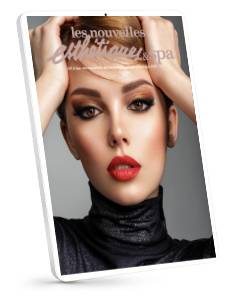Strengthen and protect your clients’ skin
Q: What is the skin barrier?
A: The skin has three protective systems: the physical skin barrier made up of lipids and proteins, the chemical barrier made up of signaling molecules, fatty acids, and antioxidants (in this category falls growth factors, defensins and selectins), and the microbiome made up of surface bacteria and yeast.
Q: Why is barrier repair so important?
A: The skin barrier is our protection against all insults in the environment around us. Damaging the skin barrier allows for all toxins to penetrate deeper and in larger amounts. A damaged skin barrier also activates inflammation in the skin. Chronic inflammation is linked to disease and cancer in many organs in the body – including the skin. Because the skin is the most visible organ of the body, people forget that it is still an organ and needs to be taken care of as we would other organs of the body.
Q: What are common mistakes people make that break down the skin barrier?
A: Using harsh products/ingredients on the skin and excess exfoliation (scrubs, microbeads, etc.). Exposure to UV, pollution, extreme temperatures, severe emotional or physical stress, lipid lowering and chemotherapeutic medicines, hormonal imbalance, and heavy metals tend to break down the skin barrier as well.
Q: How can one repair their skin barrier?
A: Use products that contain cholesterol, ceramide, and free fatty acids in the proper ratio to repair the skin barrier.
Q: What role does exfoliation take in the breakdown of the skin barrier?
A: The type of exfoliation impacts how the skin barrier is damaged. Physical exfoliation, such as with scrubs or brushes, literally creates microtears in the skin by damaging the skin cells that make up the skin barrier. Chemical exfoliation damages the lipid “glue” that holds the skin barrier together.
Q: What types of exfoliants are skin barrier safe?
A: Chemical exfoliants that are in an anti-inflammatory formulation that also contains lipids that help mitigate the damage to the skin barrier lipids are the best approach. For example, Epionce Lytic Tx contains proprietary modified salicylic acid which acts as a chemical exfoliant, but the formulation also contains anti-inflammatory botanical ingredients along with oils that prevent the skin from drying out and becoming aggravated from the salicylic acid.
Q: How do you combat a damaged skin barrier and acne simultaneously?
A: Acne is driven by many triggers, and a damaged skin barrier can actually make acne worse too. The typical approach to treating acne has been to dry out the oil, over exfoliate in an attempt to clean out the pores, and blast the skin with anti-microbial agents – damaging the skin barrier and triggering chronic inflammation – which causes the skin to produce MORE excess sebum in an attempt to repair and protect itself – leading to a vicious cycle. The goal should be to try to balance the skin out – have the correct amount of oil to normalize the function of the skin barrier, keep the abnormal microbes in check without destroying the microbiome, and reduce the inflammation in the skin all while keeping the pores cleaned out.
As a dermatologist, I also culture “acne” lesions because sometimes patients come in thinking they have an “acne” problem, when in reality it is something else entirely. If I know what microbes I’m dealing with, I can assess whether an oral anti-bacterial medication is needed to help kick start the process. I also recommend my acne patients use the Epionce Renewal Lite Facial Lotion. This is a very light-weight lotion to help repair the skin barrier and is very anti-inflammatory, without being heavy. I then recommend products to help address the microbial overgrowth and excess sebum production, such as Epionce Lytic Gel Cleanser or Purifying Wash, Purifying Spot Gel for stubborn acne lesions, and Lytic Sport Tx for daily full-face use at home. In my office, we also offer chemical peel and IPL series that really help tame down the acne lesions.
Q: Is it true that foaming cleansers disrupt the skin barrier?
A: It depends on the types of surfactants used in the cleanser. Some surfactants are damaging to the skin barrier.
Q: What is the role of pH in skin barrier function?
A: The skin has three protective systems: the physical skin barrier (made up of lipids and proteins), the chemical barrier made up of signaling molecules, fatty acids and antioxidants (in this category falls growth factors, defensins and selectins), and the microbiome made up of surface bacteria and yeast. The chemical barrier includes the low pH acid mantle which slows the growth of disease-causing microbes.













